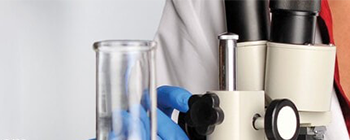Learn More
Invitrogen™ tPA Human ELISA Kit
For the quantitative detection of human t-PA.
Supplier: Invitrogen™ BMS2582TEN
Includes: Aluminum pouch(es) with a Microwell Plate coated with polyclonal antibody to human t-PA
HRP-Conjugate anti-human t-PA polyclonal antibody
Human t-PA Standard lyophilized, 2ng/mL upon reconstitution
Sample Diluent
Assay Buffer Concentrate 20x (PBS with 1% Tween 20 and 10% BSA)
Wash Buffer Concentrate 20x (PBS with 1% Tween 20)
Substrate Solution (tetramethyl-benzidine)
Stop Solution (1M Phosphoric acid)
Blue-Dye
Green-Dye
Adhesive Films
Description
The Human Tissue-type Plasminogen Activator (t-PA) ELISA quantitates Hu t-PA in human serum, or cell culture medium. The assay will exclusively recognize both natural and recombinant Hu t-PA. Principle of the method The Human t-PA solid-phase sandwich ELISA (enzyme-linked immunosorbent assay) is designed to measure the amount of the target bound between a matched antibody pair. A target-specific antibody has been pre-coated in the wells of the supplied microplate. Samples, standards, or controls are then added into these wells and bind to the immobilized (capture) antibody. The sandwich is formed by the addition of the second (detector) antibody, a substrate solution is added that reacts with the enzyme-antibody-target complex to produce measurable signal. The intensity of this signal is directly proportional to the concentration of target present in the original specimen. Rigorous validation Each manufactured lot of this ELISA kit is quality tested for criteria such as sensitivity, specificity, precision, and lot-to-lot consistency. See manual for more information on validation.
TPA converts the abundant, but inactive, zymogen plasminogen to plasmin by hydrolyzing a single Arg-Val bond in plasminogen. By controlling plasmin-mediated proteolysis, it plays an important role in tissue remodeling and degradation, in cell migration and many other physiopathological events. It specifically cleaves the Arg-|-Val bond in plasminogen to form plasmin, and is comprised of a heterodimer of chain A and chain B held by a disulfide bond. TPA binds to fibrin with high affinity. This interaction leads to an increase in the catalytic efficiency of the enzyme between 100-and 1000-fold, due to an increase in affinity for plasminogen. Similarly, binding to heparin increases the activation of plasminogen. Binding to laminin and fibronectin has also been demonstrated. TPA also binds to mannose receptor and the low-density lipoprotein receptor-related protein (LRP1). These proteins are involved in TPA clearance. TPA binds to annexin II and to cytokeratin 8. As yet unidentified interactions on endothelial cells and vascular smooth muscle cells (VSMC) lead to a 100-fold stimulation of plasminogen activation. In addition, binding to VSMC reduces TPA inhibition by PAI-1 by 30-fold.Specifications
| P00750 | |
| 6 pg/mL | |
| ELISA Kit | |
| Human | |
| Colorimetric Microplate Reader | |
| T-PA,TPA | |
| 3.6% | |
| HRP | |
| RUO | |
| 2°C to 8°C | |
| Human | |
| 2 hr. 10 min. |
| 15.6-1,000 pg/mL | |
| HRP | |
| Serum, Supernatant | |
| ELISA | |
| 5327 | |
| 6.5% | |
| Pre-coated 96 well plate, Standard, Sample Diluent, Assay Buffer concentrate, HRP-conjugated Detection Antibody, Wash Buffer, Chromogen, Stop Solution, Controls, Adhesive Plate Covers | |
| 10 x 96 Tests | |
| Serum, 10 μL; Supernatant, 10 μL | |
| Tissue-type plasminogen activator | |
| 1 hr. 20 min. |
For Research Use Only



